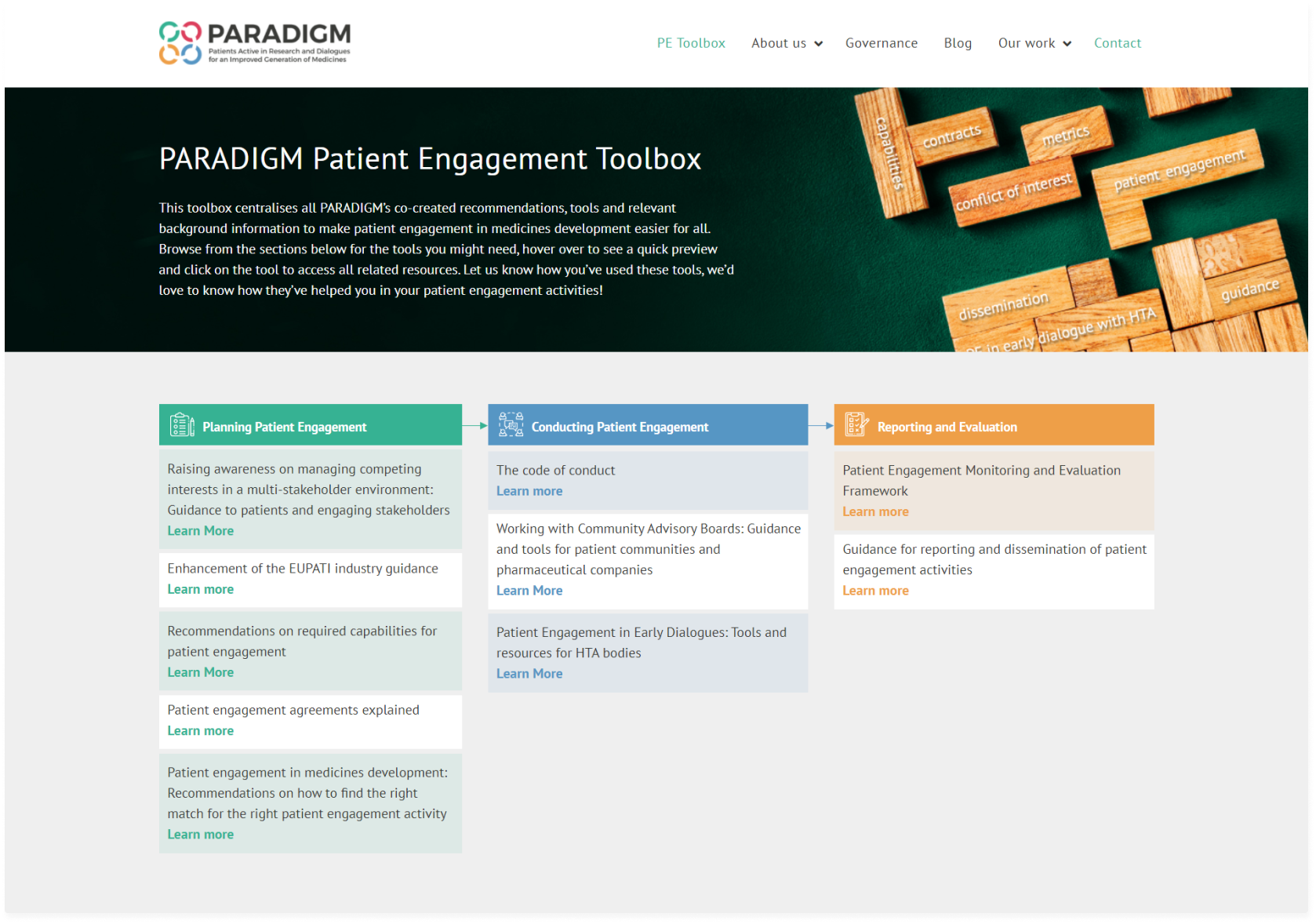About the project
PARADIGM was a public-private-partnership funded by the Innovative Medicines Initiative that focuses on driving systematic, effective, sustainable and measurable patient engagement that is also meaningful to the patient community.
The project started in March 2018 and ended in November 2020. PARADIGM focused specifically on creating tools for increased patient engagement in three specific time points in medicines development where PE tools and guidances are still proportionately underdeveloped compared to other areas (i.e. clinical trials): research priority setting, the design of clinical trials, and early dialogues with regulators and Health Technology Assessment bodies.
As one of the major contributing partners, The Synergist brought the expertise of effective and impactful co-creation through shared leadership and played a key role in co-leading two work streams that 1) focused on the co-creation of the minimal criteria for PE activities to meet the stakeholders’ needs and expectations and 2) the community engagement, communication and dissemination of the project’s outputs, in order to ensure broad reach and high adoption for the expected tools.


